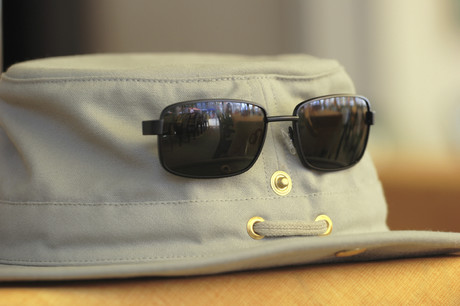Skin cancer prevention is the best (and cheapest) medicine

Skin cancer is largely preventable, yet it costs Victoria’s public hospitals more than $50 million a year.
New research from Deakin University and the Cancer Council Victoria has estimated the cost of treating skin cancer in the Victorian public hospital system for the first time, revealing that while skin cancer prevention programs are highly effective and cost-saving, funding for them attracts only a fraction of what it costs to treat the disease.
Lead researcher Dr Sophy Shih, from Deakin Health Economics, said state spending on skin cancer treatment in public hospitals — about $10 per head of population per year — was nearly 30 times current public funding in skin cancer prevention — about 37 cents.
“Approximately two in three Australians will be diagnosed with skin cancer by the age of 70. Yet ironically it is also one of the most preventable cancers, and efficient, affordable and effective prevention programs are available,” Dr Shih said.
This latest research — published in the Australian and New Zealand Journal of Public Health — is the first to provide an economic analysis of the cost impact on public hospitals and is an up-to-date assessment of prevention programs for skin cancer in Victoria.
“Our research found that, including inpatient and outpatient services, the total annual costs for Victorian public hospitals were around $50 to $55 million. And if the private hospital system was included it would add another $72 million.”
Dr Shih, a senior research fellow at Deakin’s School of Health and Social Development, said prevention programs offered the important potential for Victorian hospitals to redirect the savings from averting skin cancer to other non-preventable diseases.
“Effective skin cancer prevention programs such as SunSmart are not only saving lives, they are saving substantial costs that would be otherwise incurred via treatment services,” she said.
Cancer Council Victoria’s SunSmart program is estimated to have prevented more than 43,000 skin cancers between 1988 and 2010, and prevented 1400 premature deaths, a net saving of $92 million in healthcare costs.
“The total spend on the SunSmart program over that same period was $42 million, so in terms of return on investment the program achieved a return of around $2.20 for every dollar spent,” Dr Shih said.
“But if you also take into account productivity gains to society as a result — the avoidance of premature death or early retirement, as well as absenteeism associated with treatment activity — the program has prevented more than $713 million in productivity losses to the general economy over the past 24 years.”
Cancer Council Victoria Prevention Director and co-author Craig Sinclair said the study showed the commonsense value of programs like SunSmart.
Originally published here.
$1bn vaccine and antivenom manufacturing facility opens
A $1 billion cell-based influenza vaccine and antivenom manufacturing facility has opened in...
National concussion clinical guidelines now available
The first Australia- and New Zealand-specific guidelines for all forms of concussion — from...
Doctors criticise "risky prescribing agenda"
The AMA and RACGP have expressed disappointment in the Pharmacy Board of Australia's...




![[New Zealand] Transform from Security Awareness to a Security Culture: A Vital Shift for SMB Healthcare — Webinar](https://d1v1e13ebw3o15.cloudfront.net/data/89856/wfmedia_thumb/..jpg)
![[Australia] Transform from Security Awareness to a Security Culture: A Vital Shift for SMB Healthcare — Webinar](https://d1v1e13ebw3o15.cloudfront.net/data/89855/wfmedia_thumb/..jpg)




